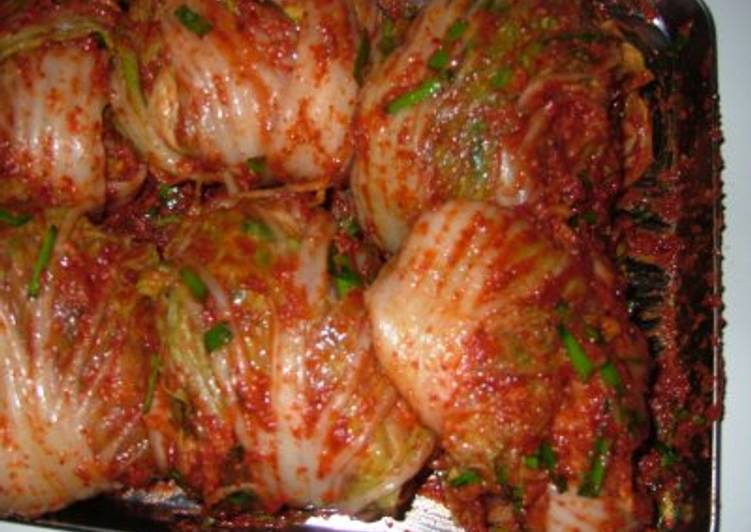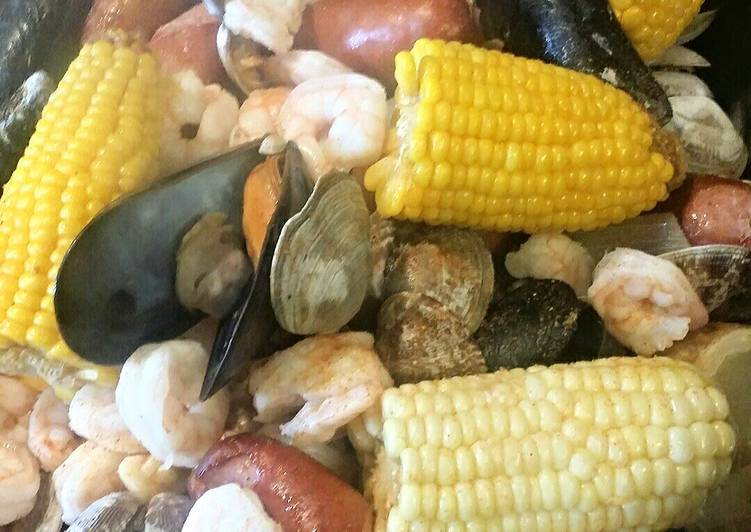
Hello everybody, hope you are having an amazing day today. Today, I’m gonna show you how to prepare a special dish, authentic kimchi. It is one of my favorites food recipes. This time, I will make it a bit unique. This is gonna smell and look delicious.
Quick and easy authentic kimchi is only a few simple steps away. Homemade Kimchi: An Easy Korean Sauerkraut Recipe. We only recommend products and services we wholeheartedly endorse.
Authentic Kimchi is one of the most well liked of current trending meals on earth. It is appreciated by millions daily. It’s easy, it is fast, it tastes delicious. Authentic Kimchi is something which I have loved my whole life. They are fine and they look wonderful.
To begin with this recipe, we must first prepare a few ingredients. You can cook authentic kimchi using 19 ingredients and 13 steps. Here is how you cook that.
The ingredients needed to make Authentic Kimchi:
- Get 2 head Chinese cabbage
- Prepare 1 Salt for pickling (5% of the weight of the cabbages)
- Take 1 medium Daikon radish
- Prepare 1/2 stalk The white part of a Japanese leek
- Prepare 1 bunch Green onions
- Take 1 bunch Chinese chives
- Get 1/2 Onion
- Make ready 1/2 Asian pear or apple
- Take 2 head Garlic
- Make ready 1 bag Ginger
- Get 20 cm piece Kombu
- Prepare 2 Scallops
- Make ready 5 to 6 Ama-ebi shrimp (with their shells on)
- Make ready 50 grams Salt-preserved squid (ika no shiokara)
- Prepare 100 grams The liquid from salt-preserved sardines
- Get 1 tbsp Sugar
- Take 100 grams Dried red chili peppers (coarsely ground)
- Take 50 grams Dried red chili peppers (finely shredded)
- Take 100 grams Rice porridge (okayu)
Why not try our fresh and delicious kimchi made in the UK ! Kimchi or Kimchee is a Korean fermented vegetable pickle dish that is probably one of the best known Korean food throughout the world. If you have ever visited a Korean restaurant, you probably saw. Most people know that traditional, authentic kimchi is made with napa cabbage (in Korean: "baechu").
Instructions to make Authentic Kimchi:
- Cut the Chinese cabbage heads into quarters, and salt with 5% of their weight in salt the day before you plan to make the kimchi. (Make sure to put plenty of salt on the tougher root ends.) The next day, when moisture has come out of the cabbage and it is immersed in it, drain off the moisture in a colander.
- Make the additional ingredients. Cut the daikon radish into 4 cm long julienne, sprinkle with salt and leave until wilted. Squeeze out the moisture.
- Cut the green onion and Chinese chives into 3 cm long pieces. Cut the leek into 3 cm long pieces and julienne.
- Put the onion, pear, garlic and ginger into a food processor and process until chopped and combined.
- Soak the konbu seaweed in water until softened, and shred finely. Combine with the scallops, ama-ebi shrimp, and the salt-preserved sardine liquid in a food processor. Process until the shrimp shells are completely chopped.
- From this point on protect your hands with gloves. Sprinkle half the chili pepper onto the daikon radish from Step 2, and mix well until it has all turned red.
- Process the salt-preserved squid in a food processor until it's chopped up. Add this to the Step 6 mixture with the sugar, and squeeze and mix together with your hands.
- Add the Step 5 konbu seaweed and the Step 5 scallop-shrimp mixture and mix and rub it all together with your hands.
- Add the chopped up garlic mixture from Step for and mix it in. Add the rest of the chili peppers and rice porridge, and mix well.
- Add the chopped up green onion, leek and Chinese chives. Mix to combine. The seasoning ingredient mix is finished.
- Next, combine the seasoning mix with the Chinese cabbage. If the cabbage is still wet dry it well with paper towels. Push in the seasoning mix between the leaves of the cabbage.
- Roll up the cabbage pieces, wrap each one with the outermost leaves, and it's done.
- Kimchi is a fermented food, so don't eat it right after you make it. It's best after resting in the refrigerator for at least 4 days. Once it tastes right, store it in the partial freezing compartment (almost freezing) of your refrigerator to slow down further fermentation.
While I travel, I sometimes see napa cabbage sold at local markets, but it's not available in many. Your special batch will arrive vacuum sealed with a gel pack and an insulated bag via priority mail. Nowadays, kimchi is made both in North and South Korea, the Southern version being more salty and spicy than the Northern one. Seasons also play a role in the flavors of kimchi - refreshing cucumber. Nearby restaurants are no good, either; their kimchi is missing that characteristic funk.
So that is going to wrap this up with this special food authentic kimchi recipe. Thank you very much for reading. I’m sure you will make this at home. There’s gonna be interesting food at home recipes coming up. Don’t forget to save this page in your browser, and share it to your family, colleague and friends. Thank you for reading. Go on get cooking!


